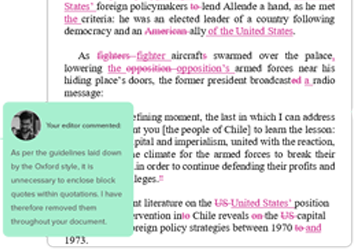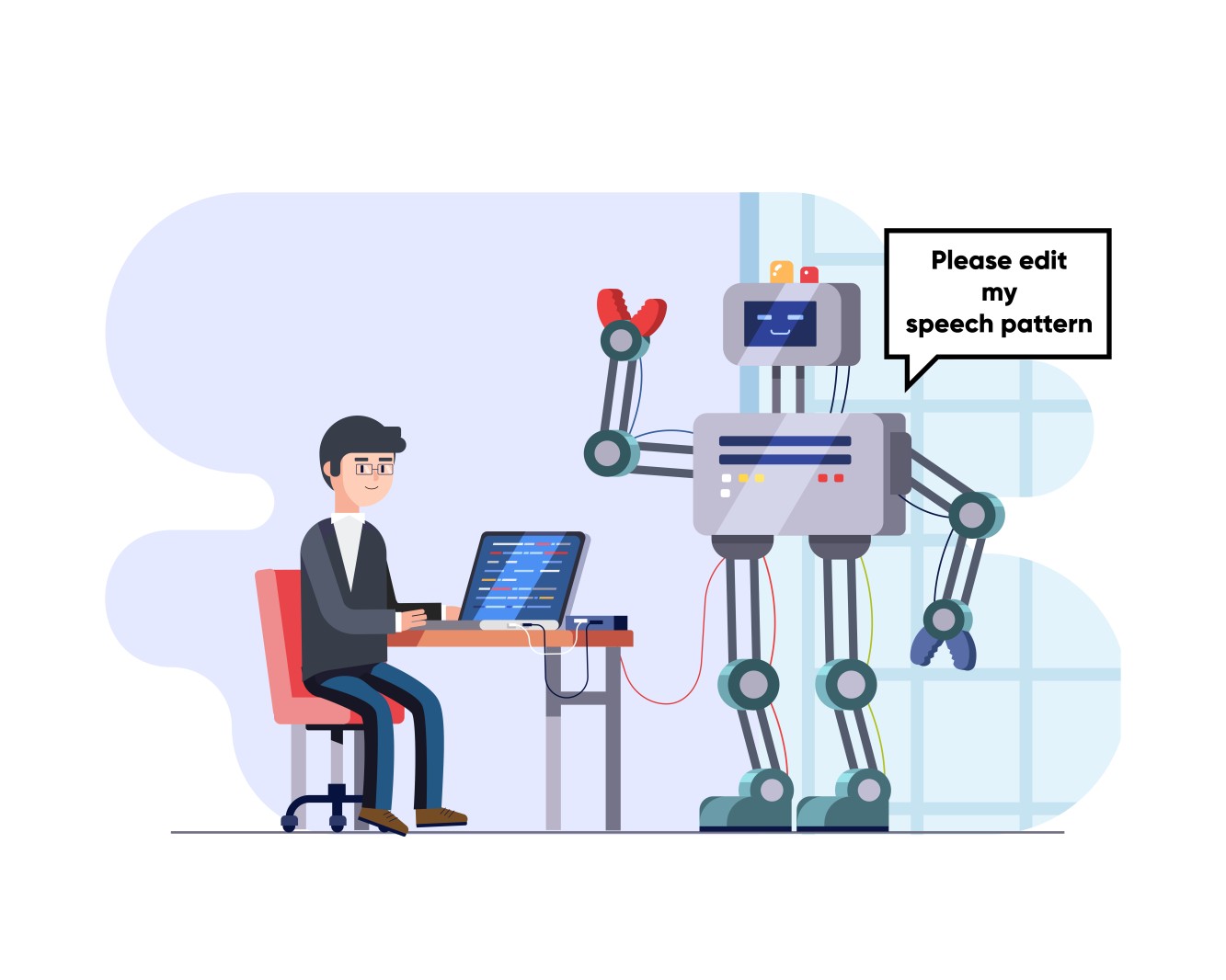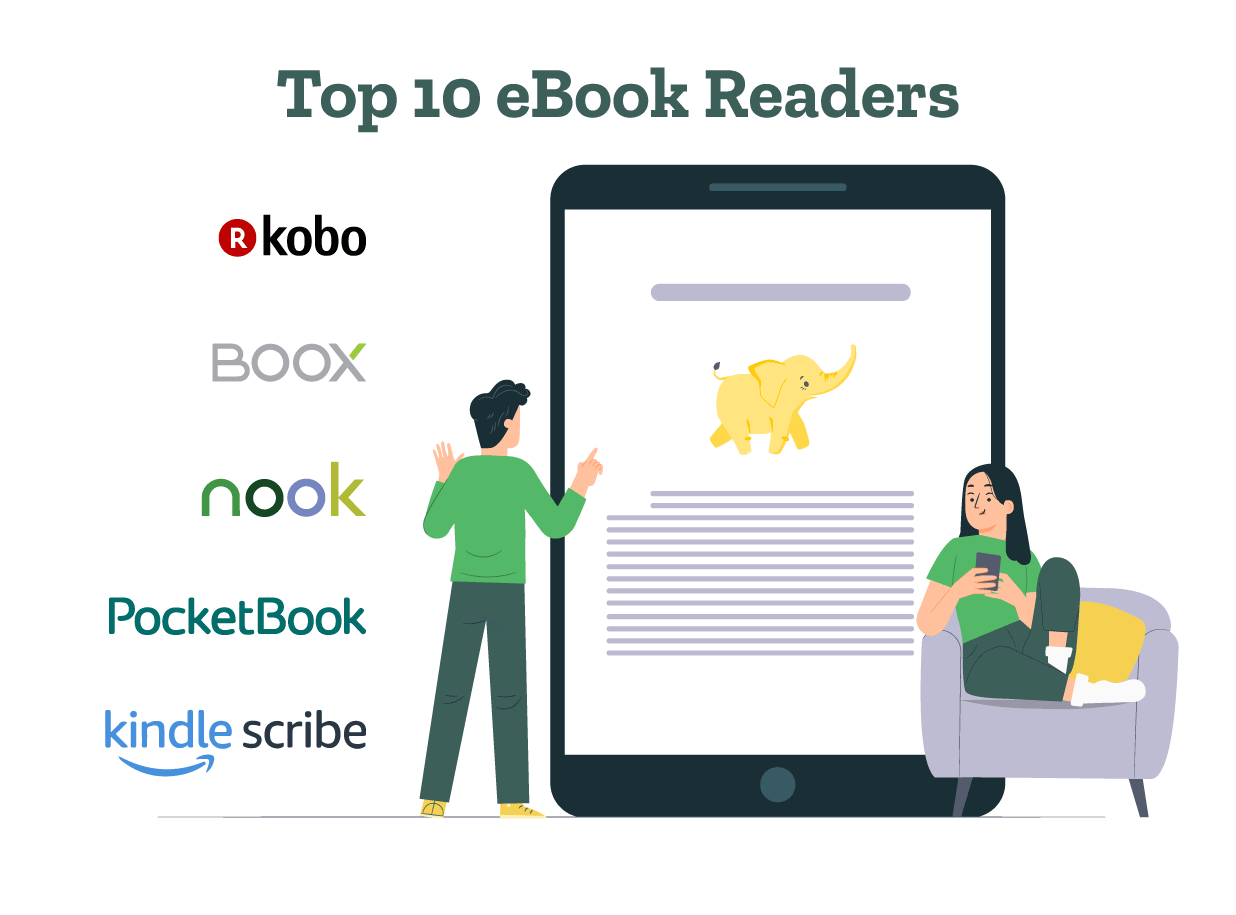Still have questions? Leave a comment

Checklist: Dissertation Proposal
Enter your email id to get the downloadable right in your inbox!

Examples: Edited Papers
Enter your email id to get the downloadable right in your inbox!
Need
Editing and
Proofreading Services?

What Is a Stock Character? 150 Examples from 5 Genres
 Aug 22, 2023
Aug 22, 2023 8
min read
8
min read
- Tags: Character, Types of Characters
Stock characters have a long and prosperous history in literature and media. They originated in Greek and Roman theater and were further developed in Commedia dell’arte and traditional theater. From there, they were adapted into novels, movies, and TV, and have become an essential component of all media today.
But what are stock characters? What does the term mean? Are they the same as archetypes or stereotypes? We’ll answer all your questions with 150 stock character examples so you can understand them better. Let’s start!
Here’s a straightforward stock character definition:
What is a stock character?
In literature and media, a stock character is one that the audience can easily recognize due to its predictable traits. Such characters are based on established archetypes and stereotypes, fulfilling specific roles within a narrative. For example, the readers of a romance novel will expect stock characters such as the rival, the quirky friend, and the parental figure.
Want help remembering this stock character definition? Think of it as this: Stock characters are called so because they form the stock of characters present in a story. Of the many types of characters, stock characters are the most easily recognizable.
Here are some notable traits of stock characters:
- Predictable and stereotypical
- Easily recognizable to the audience
- Flat or one-dimensional, with little depth
- Fulfill a narrative purpose (comic relief, mentor, antagonist, etc.)
- Use clichéd phrases or expressions
- Symbolize key themes or values within the story
Stock characters and negative stereotypes
Since they’re based on popular tropes, stock characters often reflect negative stereotypes associated with gender or racial identities. We’re all too familiar with the sassy Black friend, the tough Latina, the gay best friend, and the foreign terrorist that popped up in most ’90s media. Of course, media representation has evolved since then and we’ve seen more and more nuanced character depictions in recent years.
So where does that leave stock characters? They still make up the bulk of characters we find in media but are portrayed with nuance and sensitivity. Stock characters offer a chance for creatives to subvert audience expectations by presenting a newer take on a familiar archetype.
A great example of this is Stranger Things, which subverts pretty much every stock character there is:
- The nerds (Dustin, Lucas, Mike, and Will) turn out to be brave and resourceful central characters.
- The high school bully (Steve Harrington) evolves into a caring person.
- The innocent girl (Nancy Wheeler) shows remarkable courage and strength of character.
- The tough girl (Max Mayfield) reveals vulnerabilities that make her character more complex.
- The grief-stricken parent (Joyce Byers) takes active steps to find her son.
A literary editor can help you add depth to your stock characters and escape the old cliché trap. Don’t underestimate the importance of editing while refining your characters! Let’s take a look at some examples of stock characters to better understand how to add depth to these characters.
Stock character examples
Stock characters are specific to individual genres. While intriguing works might situate a wizard in a science fiction narrative, it’s an exception to the norm. Audiences can tell the genre by the stock of characters before them and they also expect a stock of characters to be present in a specific genre.
So, we’ve grouped our stock character examples into the top 5 genres of literature and media. Some of these types of stock characters might give you a pause, such as the protagonist and the villain. These characters tend to be well-developed and complex, traits that are typically not associated with stock characters. However, they are still stock characters, only developed and deepened to a certain extent.
Let’s start!
1. Fantasy
Here’s a list of stock characters commonly found in fantasy literature and media:
1. The hero
Aragorn (The Lord of the Rings by J.R.R. Tolkien)
Lyra Belacqua (His Dark Materials by Philip Pullman)
Percy Jackson (Percy Jackson and the Olympians by Rick Riordan)
2. The wise mentor
Gandalf (The Lord of the Rings by J.R.R. Tolkien)
Iroh (Avatar: The Last Airbender)
Merlin (Arthurian legends)
3. The dark lord
Sauron (The Lord of the Rings by J.R.R. Tolkien)
Skeletor (He-Man and the Masters of the Universe)
Maleficent (Sleeping Beauty)
4. The sidekick
Samwise Gamgee (The Lord of the Rings by J.R.R. Tolkien)
Willow Rosenberg (Buffy the Vampire Slayer)
Tonto (The Lone Ranger)
5. The chosen one
Eragon (Inheritance Cycle by Christopher Paolini)
Rand al’Thor (Wheel of Time series by Robert Jordan)
Neo (The Matrix)
6. The magical creature
Red Bluster (The Sea Beast)
Aslan (The Chronicles of Narnia by C.S. Lewis)
Falkor (The NeverEnding Story)
7. The femme fatale
Morrigan (Dragon Age video game series)
Cersei Lannister and Melisandre (A Song of Ice and Fire by George R.R. Martin)
Catwoman (DC Comics)
8. The reluctant hero
Aang (Avatar: The Last Airbender)
Luke Skywalker (Star Wars)
Geralt of Rivia (The Witcher by Andrzej Sapkowski)
9. The trickster
Loki (Norse mythology)
Puck (A Midsummer Night’s Dream by William Shakespeare)
The Cheshire Cat (Alice’s Adventures in Wonderland by Lewis Carroll)
10. The damsel in distress
Princess Peach (The Super Mario Bros.)
Buttercup (The Princess Bride by William Goldman)
Princess Aurora (Sleeping Beauty)
2. Mystery
Mystery literature and media works generally feature this stock character list:
1. The detective
Sherlock Holmes (Sherlock Holmes by Arthur Conan Doyle)
Hercule Poirot (Agatha Christie’s novels)
Miss Marple (Agatha Christie’s novels)
2. The sidekick
Dr. John Watson (Sherlock Holmes by Arthur Conan Doyle)
Captain Arthur Hastings (Agatha Christie’s novels)
Inspector Lewis (Inspector Morse by Colin Dexter)
3. The femme fatale
Brigid O’Shaughnessy (The Maltese Falcon by Dashiell Hammett)
Carmen Sternwood (The Big Sleep by Raymond Chandler)
Laura Mulvey (Laura by Vera Caspary)
4. The police officer
Inspector Morse (Inspector Morse by Colin Dexter)
Armand Gamache (Chief Inspector Armand Gamache by Louise Penny)
Lieutenant Eve Dallas (In Death by J.D. Robb)
5. The victim
Laura Hunt (Laura by Vera Caspary)
Roger Ackroyd (The Murder of Roger Ackroyd by Agatha Christie)
Sir Henry Clithering (Agatha Christie’s novels)
6. The amateur sleuth
Miss Marple (Agatha Christie’s novels)
Flavia de Luce (Flavia de Luce by Alan Bradley)
Jessica Fletcher (Murder, She Wrote by Jessica Fletcher)
7. The police chief
Chief Inspector Armand Gamache (Chief Inspector Armand Gamache by Louise Penny)
Commissioner Raymond Brown (Inspector Morse by Colin Dexter)
Captain Salvo Montalbano (Inspector Montalbano by Andrea Camilleri)
8. The suspect with a hidden past
Simon Doyle (Death on the Nile by Agatha Christie)
Charles Bruno (Strangers on a Train by Patricia Highsmith)
Richard Arlen (The Moving Finger by Agatha Christie)
9. The eccentric investigator
Lord Peter Wimsey (Dorothy L. Sayers’s novels)
Benoit Blanc (Knives Out)
Gideon Fell (John Dickson Carr’s novels)
10. The mastermind villain
Professor James Moriarty (Sherlock Holmes by Arthur Conan Doyle)
Simeon Lee (Hercule Poirot’s Christmas by Agatha Christie)
A (Pretty Little Liars by Sara Shepard)
3. Romance
These types of stock characters populate the world of romance literature and media:
1. The protagonist
Elizabeth Bennet (Pride and Prejudice by Jane Austen)
Alex Claremont-Diaz (Red, White & Royal Blue by Casey McQuiston)
Mei (Small Beauty by Jia Qing Wilson-Yang)
2. The love interest
Mr. Darcy (Pride and Prejudice by Jane Austen)
Prince Henry of Wales (Red, White & Royal Blue by Casey McQuiston)
Henry (Small Beauty by Jia Qing Wilson-Yang)
3. The best friend/confidante
Charlotte Lucas (Pride and Prejudice by Jane Austen)
Leah Burke (Simon vs. the Homo Sapiens Agenda by Becky Albertalli)
Lily Lucas (The Hating Game: A Novel by Sally Thorne)
4. The rival
George Wickham (Pride and Prejudice by Jane Austen)
Amanda Ling (Crazy Rich Asians by Kevin Kwan)
Kerry Fuller (Real Men Knit by Kwana Jackson)
5. The mentor/matchmaker
Emma Woodhouse (Emma by Jane Austen)
Peter’s family (Single All the Way)
Louisa’s family (Me Before You by Jojo Moyes)
6. The eccentric relative/friend
Mr. Collins (Pride and Prejudice by Jane Austen)
Tara Shetty (Heartstopper by Alice Oseman)
Helene Pascal (The Hating Game by Sally Thorne)
7. The mysterious stranger
Mr. Rochester (Jane Eyre by Charlotte Brontë)
Heathcliff (Wuthering Heights by Emily Brontë)
Rhett Butler (Gone with the Wind by Margaret Mitchell)
8. The parental figure
Mrs. Bennet (Pride and Prejudice by Jane Austen)
Eleanor Young (Crazy Rich Asians by Kevin Kwan)
Emily Spier (Simon vs. the Homo Sapiens Agenda by Becky Albertalli)
9. The former flame
Wickham (Pride and Prejudice by Jane Austen)
James (Single All the Way)
Holly (Small Beauty by Jia Qing Wilson-Yang)
10. The misunderstood character
Mr. Rochester (Jane Eyre by Charlotte Brontë)
Heathcliff (Wuthering Heights by Emily Brontë)
Vivian Kensington (Legally Blonde)
4. Science fiction
Here are some stock character examples from science fiction literature and media:
1. The protagonist/hero
Luke Skywalker (Star Wars)
Ellen Ripley (Alien)
Neo (The Matrix)
2. The scientist
Dr. Emmett Brown (Back to the Future)
Dr. John Hammond (Jurassic Park)
Dr. Lauren Olamina (Parable of the Sower by Octavia E. Butler)
3. The alien
E.T. (E.T. the Extra-Terrestrial)
Spock (Star Trek)
The Ekumen (The Left Hand of Darkness by Ursula K. Le Guin)
4. The AI/android
Wintermute (Neuromancer by William Gibson)
HAL 9000 (2001: A Space Odyssey)
Ava (Ex Machina)
5. The rebel
R. Giskard Reventlov (Robots and Empire by Isaac Asimov)
Malcolm Reynolds (Firefly)
Morpheus (The Matrix)
6. The evil overlord
Darth Vader (Star Wars)
Gollancz (Perdido Street Station by China Miéville)
Jokol (Rocannon’s World by Ursula K. Le Guin)
7. The bounty hunter
Boba Fett (Star Wars)
Samus Aran (Metroid video game series)
Spike Spiegel (Cowboy Bebop)
8. The alien invasion force:
The Martians (War of the Worlds)
The Covenant (Halo video game series)
The Tripods (The Tripods trilogy by John Christopher)
9. The time traveler
The Doctor (Doctor Who)
Gideon Nav (Gideon the Ninth by Tamsyn Muir)
Billy Pilgrim (Slaughterhouse-Five by Kurt Vonnegut)
10. The reluctant hero
Arthur Dent (The Hitchhiker’s Guide to the Galaxy)
Wade Watts (Ready Player One)
Louise Banks (Story of Your Life by Ted Chiang)
5. Horror
Here’s a list of stock characters commonly found in the horror genre:
1. The final survivor
Sidney Prescott (Scream)
Jess Bradford (Black Christmas)
Charlie Manx (NOS4A2 by Joe Hill)
2. The paranormal investigator
Elise Rainier (Insidious)
Ed and Lorraine Warren (The Conjuring)
Quincie Morris (Tantalize by Cynthia Leitich Smith)
3. The outsider/reclusive psychic
Danny Torrance (Doctor Sleep by Stephen King)
Nell Vance (The Haunting of Hill House by Shirley Jackson)
Cassie Hack (Hack/Slash by Tim Seeley)
4. The curious investigator
Malorie (Bird Box by Josh Malerman)
Dr. Kate Lloyd (The Thing)
Nica Pierce (Curse of Chucky)
5. The skeptic/troubled skeptic
Elliot Moore (The Happening)
Marianne Engel (The Gargoyle by Andrew Davidson)
Michael Taylor (The Exorcism of Emily Rose)
6. The mysterious child
Cole Sear (The Sixth Sense)
Charlie (Hereditary)
Eli (Let the Right One In by John Ajvide Lindqvist)
7. The scientist/unhinged scientist
Dr. Herbert West (Herbert West–Reanimator by H.P. Lovecraft)
Dr. Frankenstein (Frankenstein by Mary Shelley)
Dr. Eleanor Vance (The Haunting of Hill House by Shirley Jackson)
8. The relentless killer/monster
Michael Myers (Halloween)
Samara Morgan (The Ring)
Pennywise (It by Stephen King)
9. The unlikely hero
Katie Mott (Mexican Gothic by Silvia Moreno-Garcia)
Tallahassee (Zombieland)
Tommy Jarvis (Friday the 13th)
10. The corrupted authority figure
Principal Wilkins (Trick ‘r Treat)
Father Lankester Merrin (The Exorcist by William Peter Blatty)
Dr. Louis Creed (Pet Sematary by Stephen King)
Stock character vs. character archetype
Stock characters are specific characters typical of a genre while character archetypes represent the broader aspects of universal human behavior. The terms are often confused with each other since they refer to similar concepts and have evolved over time, bearing a long literary history. However, they differ in several ways:
Stock characters can be developed by combining timeless character archetypes and contemporary stereotypes. For instance, the hero archetype is found in cultures and mythologies across the world, making it a universal facet of human storytelling. In modern genres, however, it has been refined and made specific to various genres. The detective from the mystery genre and the final survivor from the horror genre are stock characters developed from the archetypal hero’s journey.
Now that you know what stock characters are, think about how you can use them to subvert audience expectations or fulfill them. If you need some help with fleshing out your stock characters, our story editing services are at your disposal.
If you’d like some more fiction writing tips, feel free to peruse our articles:

Tanvi

With a foundation in Life Sciences, Tanvi enjoys curating technical writing tips tailored for ESL students. When she's not translating complex concepts into bite-sized nuggets, she can be found playing with dogs or painting landscapes.
One comment on “What Is a Stock Character? 150 Examples from 5 Genres”
Comments are closed.






good explanation, thanks for sharing.